Old Delhi, the last of the seven reincarnations of Delhi subsumes most of the Mughal legacy. The legacy manifests itself not only in the architectural marvels, but also (and in a more interesting manner) in the lifestyle of generations that have lived here ever since. The old, dilapidated rooftops of Old Delhi carry one such imprint – the art of pigeon combat, Kabootarbazi.
For me, the curiosity to meet these pigeon fanciers was first borne out of William Dalrymple’s “City of Djinns”. This curiosity took me deeper into Matia Mahal, Haveli Azam Khan, and numerous other bylanes that bear the signature of Mughal era. In this era of multiplexes and satellite-fed-entertainment it was difficult to imagine the survival of this traditional pastime, that too in the heart of Delhi. As I climbed some of the rooftops in these gallis, distances – both physical and historical – shrunk. Houses that seemed far away while traversing the busy bylanes, were just a shout away. I was to witness how people make hundreds of pigeons fly in tandem guiding each movement, how an uncommon language flows between the humans and pigeons. For some men, it is a heritage of their forefathers, for others it’s an expensive hobby (and almost an addiction) and for some it’s a stress buster and a way to keep friendships going.
This work is a visual narrative of the time I spent on these rooftops in the last one year. I love observing, experiencing and documenting traditional ways of living, some of which will vanish sooner or later in this fast paced life.
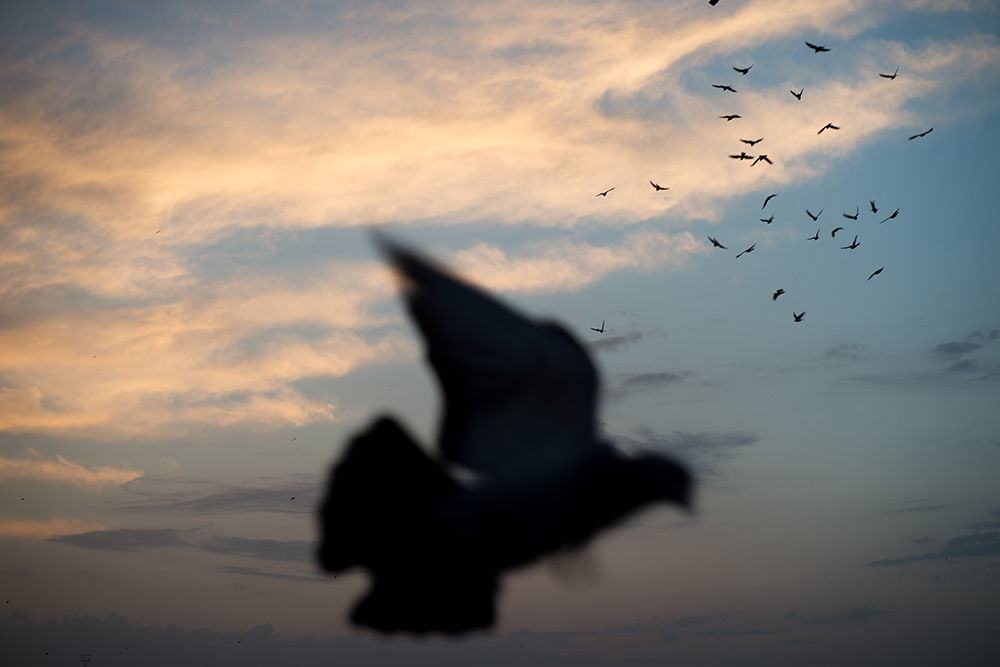
The art of pigeon racing is a royal legacy. It is said that the sport reached its zenith in Agra during the reign of Akbar and was then introduced to Delhi (then Shahjahanabad) by Shahjahan.
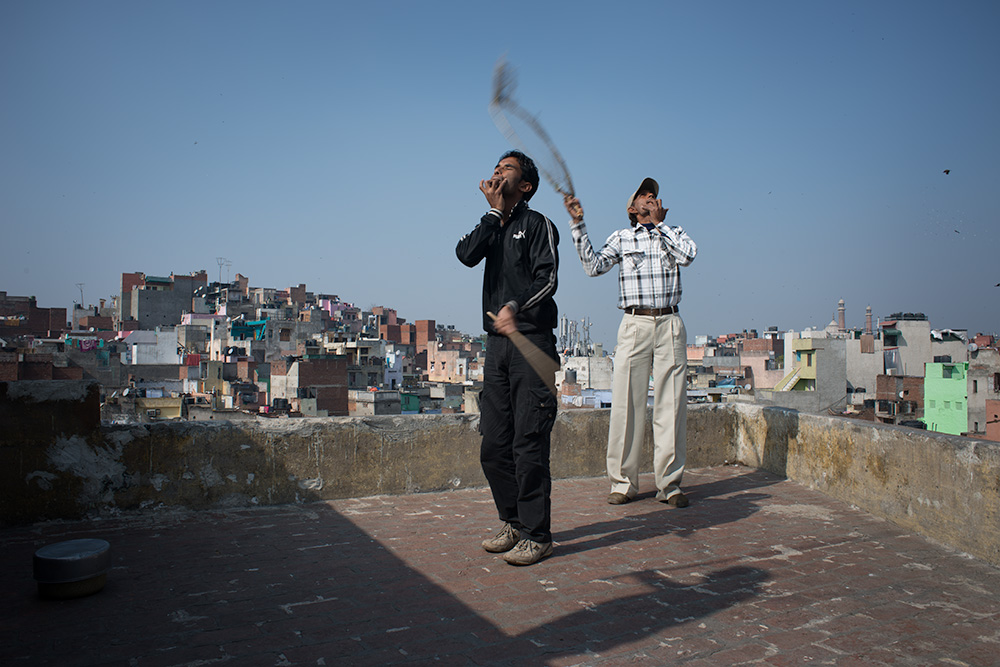
In the winter sun, the walled city rooftops are crowded with men – young and old – sending their birds for ‘rounding’ trips. The air is filled with the cacophony of “aao, aao” as they urge their pigeons to fly distances and then come back so that they can identify their chhaat (roof) from distance.
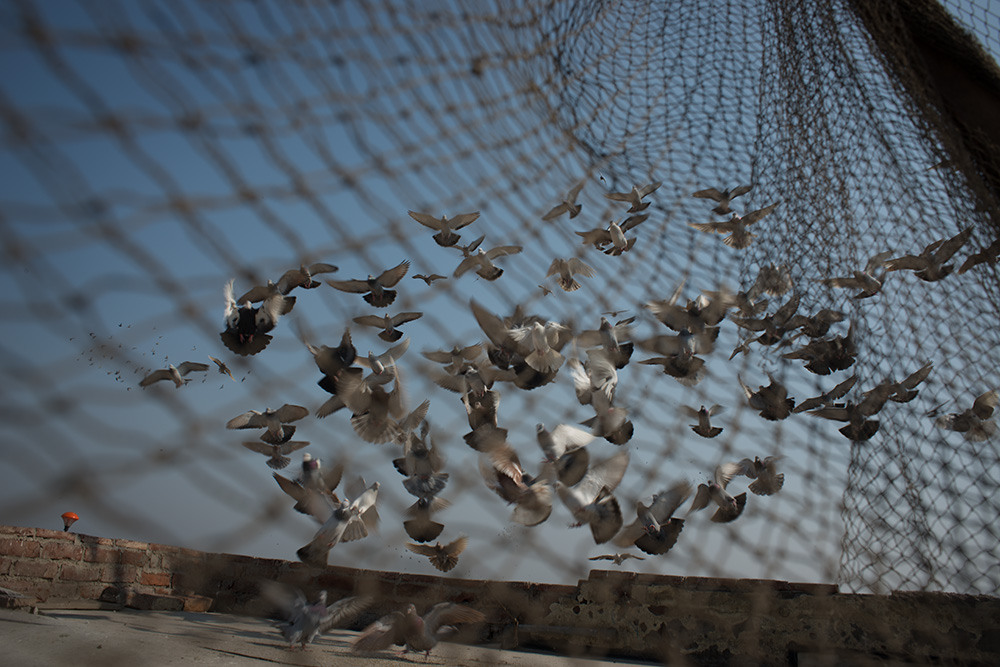
Unlike Agra, where pigeon races happen in open areas, the races in Old Delhi happen from the roof tops. Among the few surviving racing types is the “distance flying race” wherein the Gola Kabootars, which fly the farthest are declared the winners.

While there are thousands of pigeon handlers in old Delhi, there are only a few khalifas and even fewer Ustads, men who trained under earlier masters and for whom pigeon handling is a serious craft.
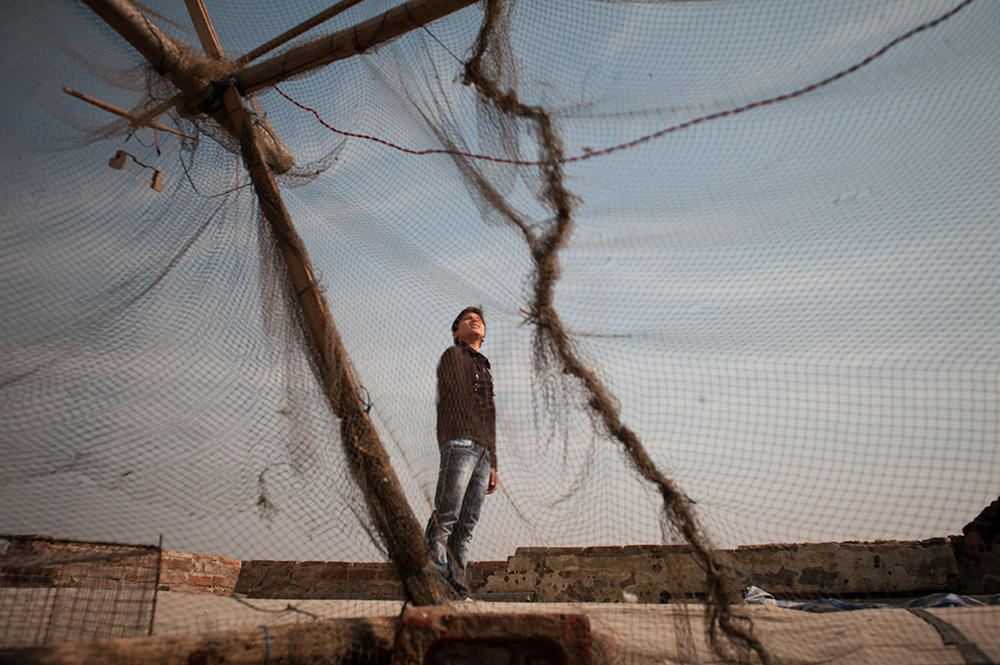
Most of the Kabootarbaz’s time is spent training the pigeon for the big day. The daily ritual includes – feeding them, training them and treating their ailments.
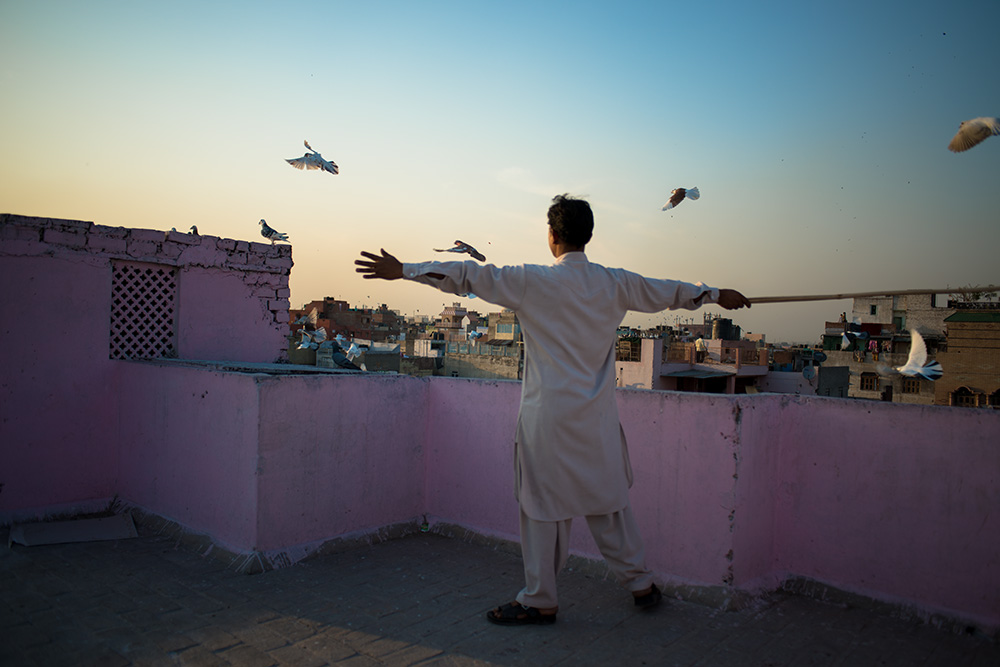

Pigeons are raised like their kids and fed on a rich diet of dry fruits, desi ghee, millet and corn.
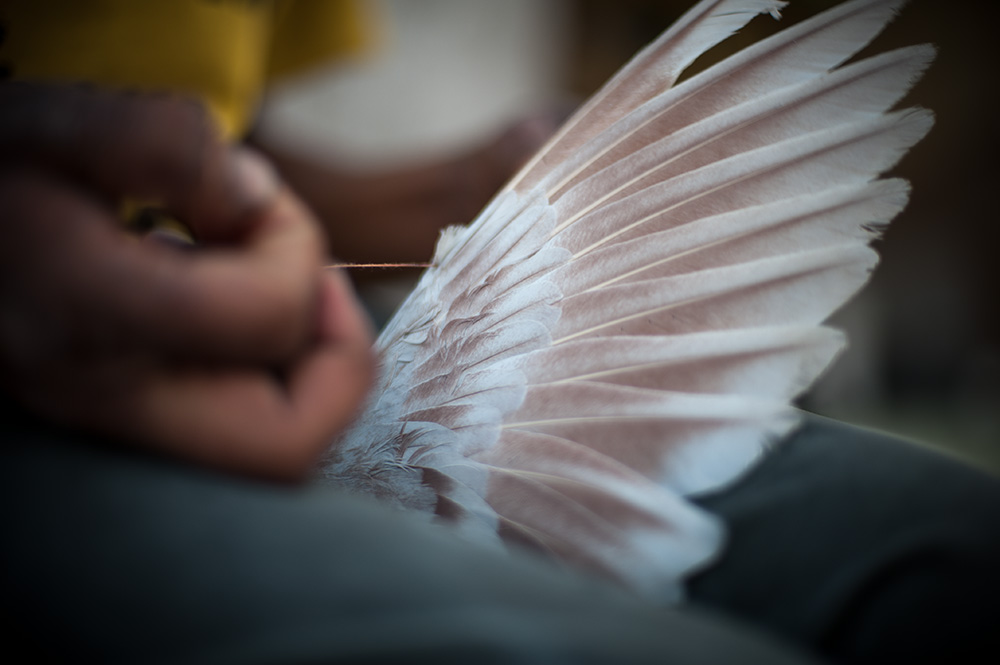
These pigeons are mostly either bought from local pigeon market or from the markets in Agra, Hyderabad and Patiala. Their feathers are sewn and they are left open on the roof so that they get used to the roof and start identifying it as their own.
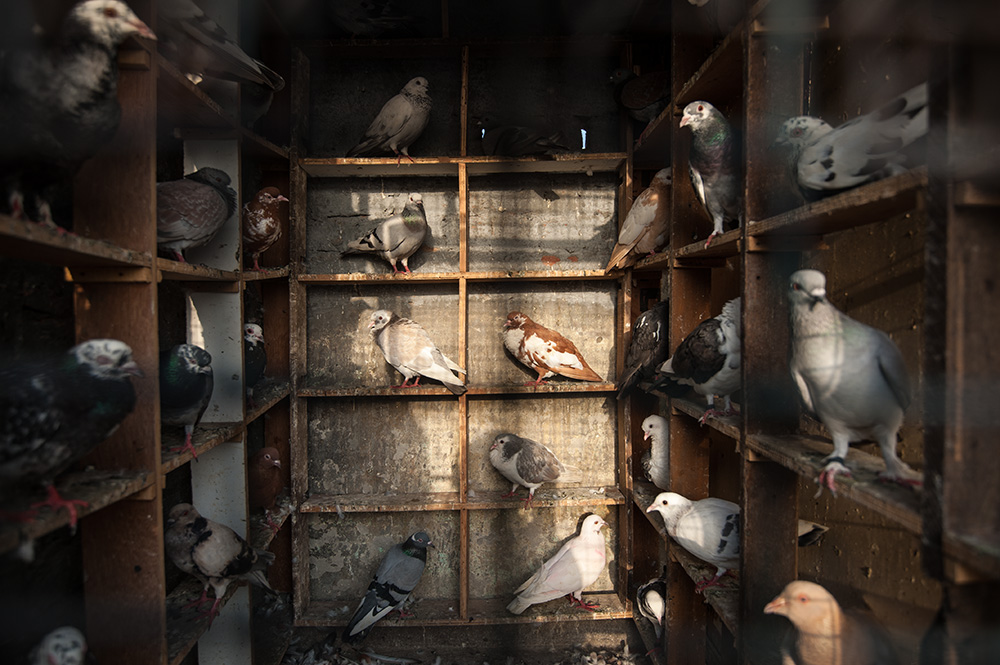
There are separate coops for the males and the females. In bigger rooftops there are separate coops for the sick birds. Sometimes these coops are further divided based on how old and strong are the pigeons.
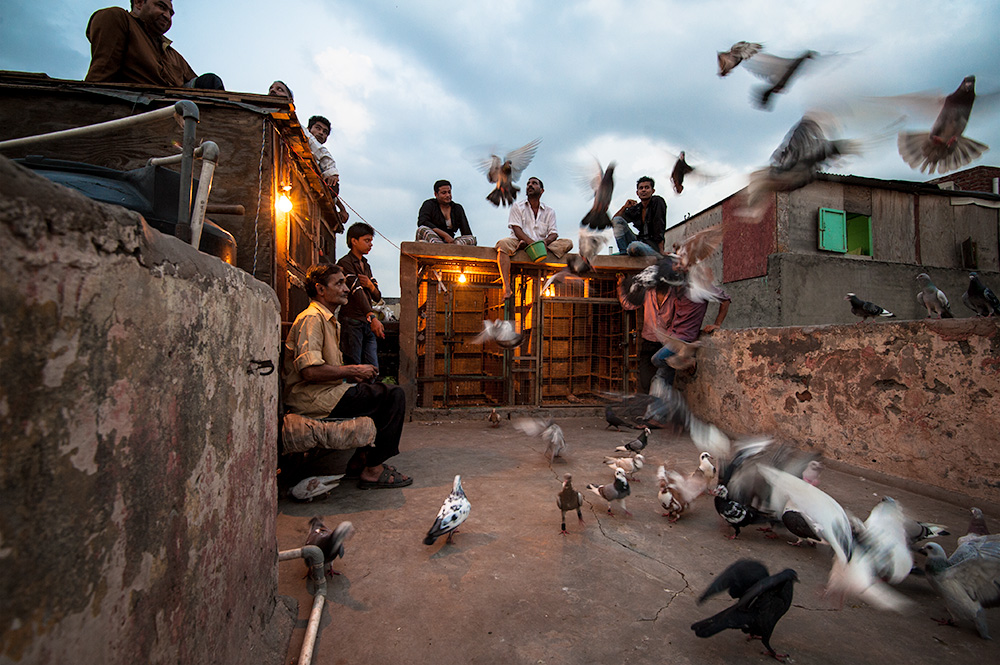
Ehsaan bhai works in a Ghazipur abattoir by the day. He says the time he spends on his roof is a stress-buster. It is like a social gathering where friends and shagirds (his students) meet over tea.
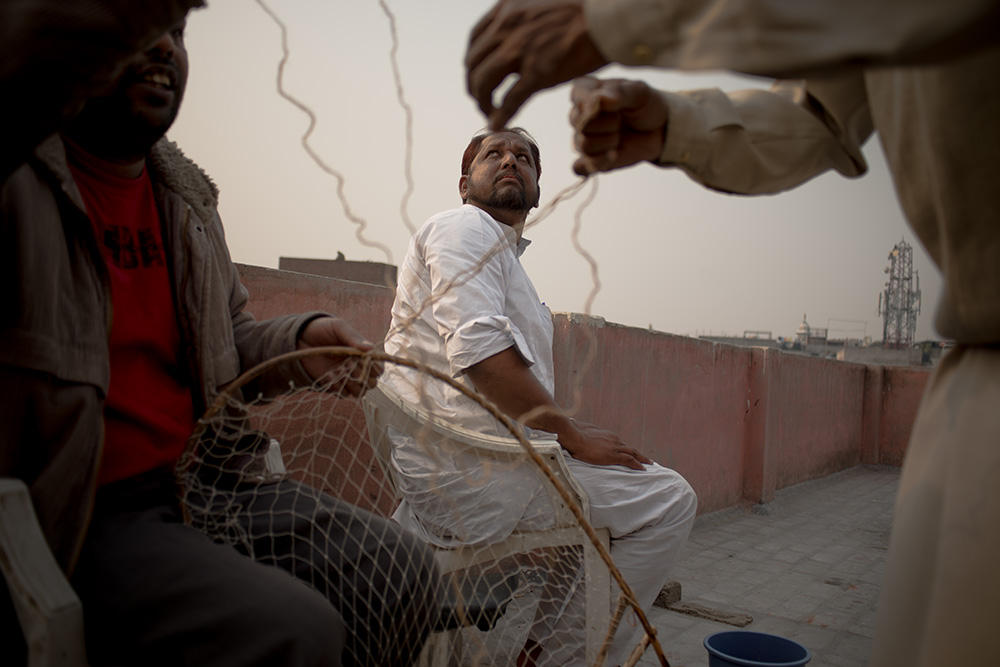
Afsar Ahmed, a local builder by profession, inherited this shauk (hobby) from his father who is an Ustad, a master. His roof in Katra Suzan Rai has over two hundred pigeons.
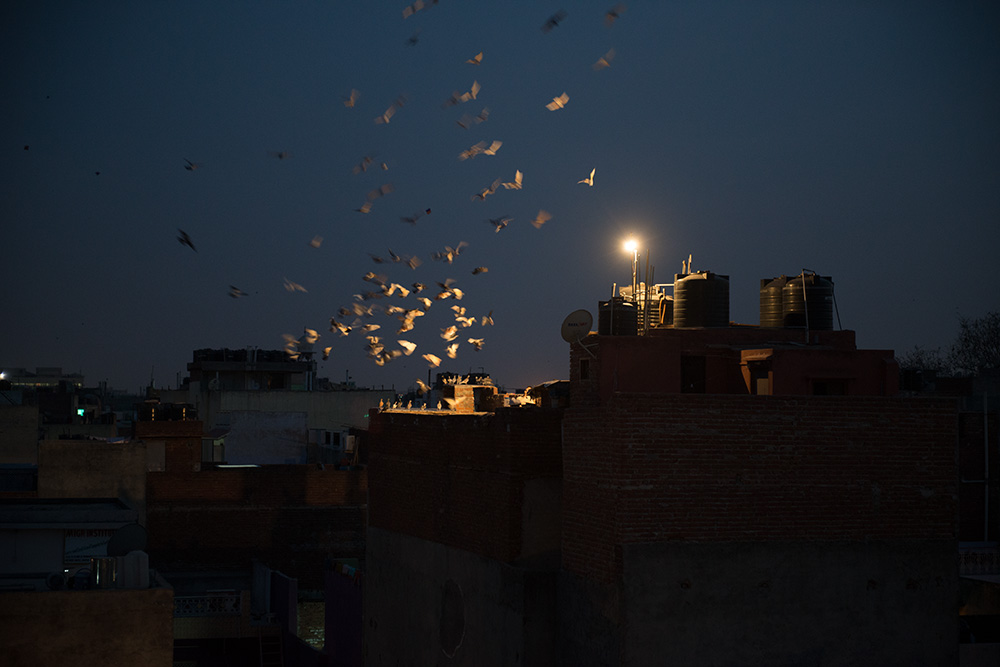
It almost seems like as if the legacy has kept these people together for years and these bonds in turn have helped preserve this traditional pastime.
Bio:
Mohit Gupta is an independent photographer based out of New Delhi. His focuses on documenting traditional life ways of living as they exist today.





